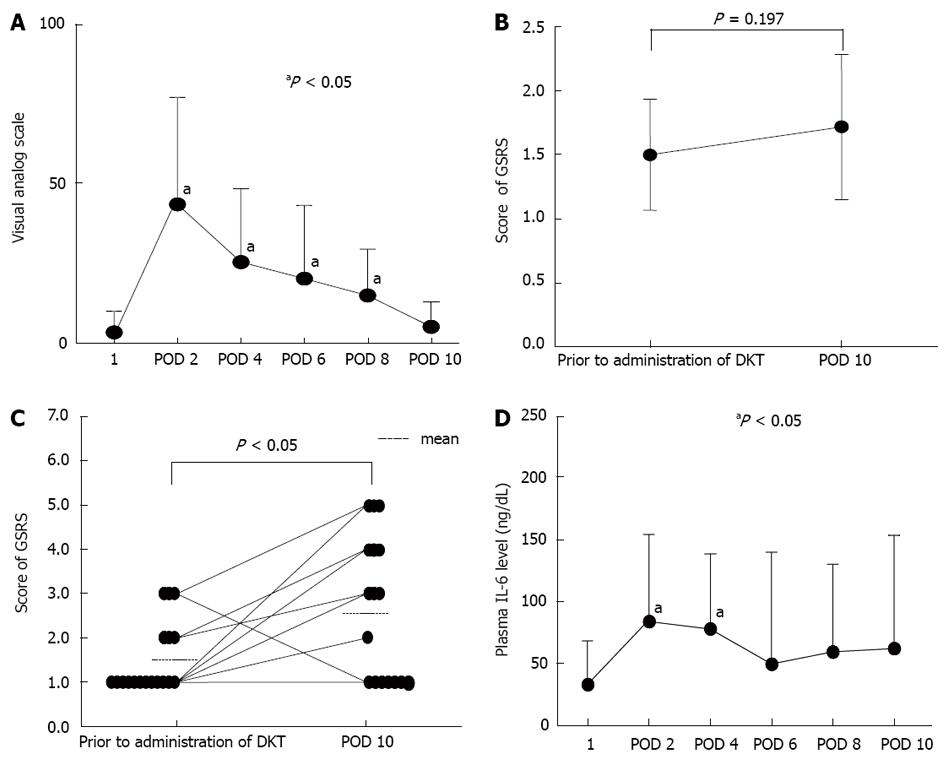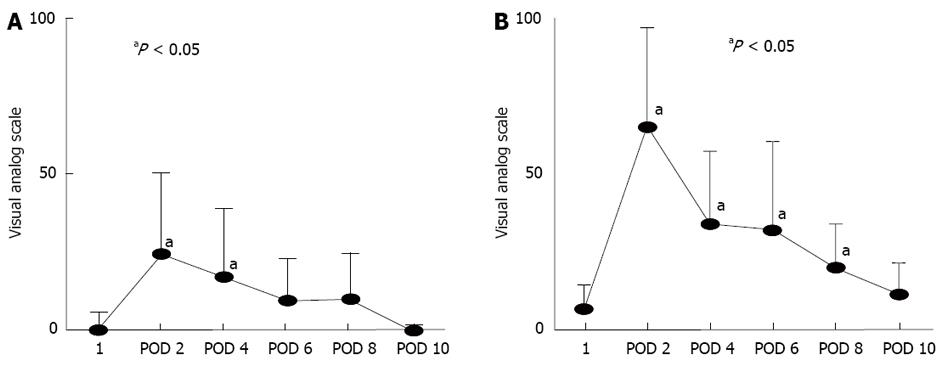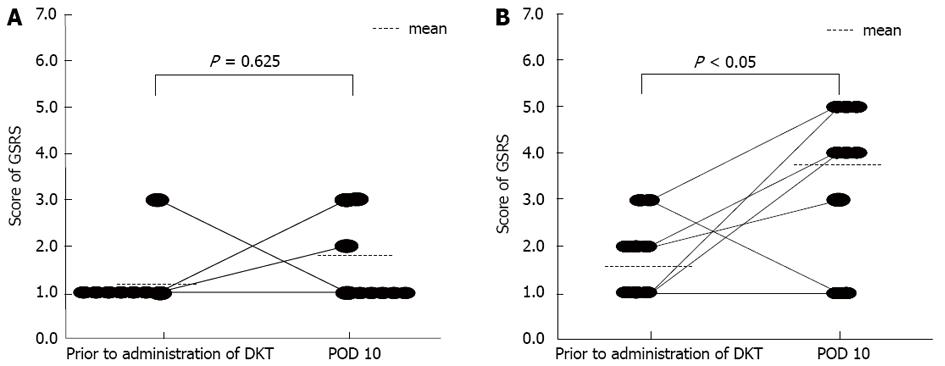Copyright
©2013 Baishideng Publishing Group Co.
World J Gastrointest Surg. Apr 27, 2013; 5(4): 115-122
Published online Apr 27, 2013. doi: 10.4240/wjgs.v5.i4.115
Published online Apr 27, 2013. doi: 10.4240/wjgs.v5.i4.115
Figure 1 Changes in severity of abdominal symptoms and plasma interleukin-6 level following hepatic resection.
A: Visual analogue scale (VAS) score for abdominal bloating; B: Total gastrointestinal symptoms rating scale (GSRS) score for abdominal symptoms; C: GSRS score for abdominal bloating were measured before and after hepatic resection in all patients; D: Plasma interleukin-6 level. In panels (A) and (B), data represent means ± SD (n = 18). In panel (C), data are presented as individual patient scores. Data obtained prior to administration of Daikenchuto (DKT) were measured before hepatic resection. POD: Postoperative day. aP < 0.05 vs prior to administration of DKT. 1: Prior to administration of DKT.
Figure 2 Comparison of visual analogue scale score for abdominal bloating in patients treated with Daikenchuto alone and those treated with combination therapy of Daikenchuto and lactulose.
Visual analogue scale (VAS) scores for abdominal bloating were measured in (A) Daikenchuto (DKT) alone group and (B) combination therapy group before and after hepatic resection. Data obtained prior to administration of DKT were measured before hepatic resection. POD: Postoperative day. Data represent means ± SD (n = 9, in each group). aP < 0.05 vs prior to administration of DKT. 1: Prior to administration of DKT.
Figure 3 Comparison of gastrointestinal symptoms rating scale score for abdominal bloating in patients treated with Daikenchuto alone and those treated with combination therapy of Daikenchuto and lactulose.
Gastrointestinal symptoms rating scale (GSRS) scores for abdominal bloating in (A) Daikenchuto (DKT) alone group (n = 9) and (B) combination therapy group (n = 9) were measured before and after hepatic resection. Data obtained prior to administration of DKT were measured before hepatic resection. Data for individual patients are shown. POD: Postoperative day.
Figure 4 Comparison of nutritional intake between patients treated with (A) Daikenchuto alone and those treated with (B) combination therapy of DKT and lactulose.
Mean total calorie intake was measured in the Daikenchuto (DKT) alone group and combination therapy group after hepatic resection. Data represent means ± SD (n = 9, in each group). aP < 0.05 vs combination therapy group (C).
- Citation: Hanazaki K, Ichikawa K, Munekage M, Kitagawa H, Dabanaka K, Namikawa T. Effect of Daikenchuto (TJ-100) on abdominal bloating in hepatectomized patients. World J Gastrointest Surg 2013; 5(4): 115-122
- URL: https://www.wjgnet.com/1948-9366/full/v5/i4/115.htm
- DOI: https://dx.doi.org/10.4240/wjgs.v5.i4.115












